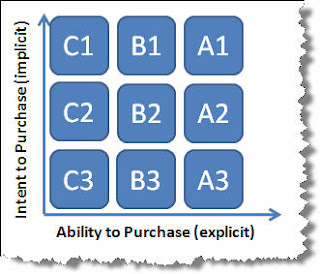 As this transition happens, marketing and sales teams must react. With the shift to online from face to face, the ability to see body language and “read the room” has disappeared. Marketing must step in to read prospects’ Digital Body Language and use that knowledge to guide the prospects’ buying process.
As this transition happens, marketing and sales teams must react. With the shift to online from face to face, the ability to see body language and “read the room” has disappeared. Marketing must step in to read prospects’ Digital Body Language and use that knowledge to guide the prospects’ buying process.The new book “Digital Body Language – Deciphering Customer Intentions in an Online World”, discusses the transitions that this is forcing in marketing departments everywhere, as they move to succeed in this new reality. In it, Steven Woods, industry expert and CTO of Eloqua discusses best practices for analyzing and understanding customer intent through analyzing their Digital Body Language.
The book uses informative explanations and in-depth case studies of many of the leading marketers around the world to show approaches to profiling, leads scoring, lead nurturing, sales handoff, marketing analytics, and data management.
Woods makes a compelling case that the transitions we are all experiencing in today's marketing environment are part of a fundamental shift in the way we think about marketing and the way we understand the buying process of our customers.
Available today on Amazon:http://www.amazon.com/Digital-Body-Language-Steven-Woods/dp/0979988551
the official press release:
http://www.marketwire.com/press-release/Eloqua-980067.html
And some reviews of the book:
Laura Ramos, VP at Forrester Research, on B2B Marketing Posts:
http://b2bmarketingpost.com/2009/03/10/digital-body-language-steve-woods-on-b2b-marketing/
Mike Gospe on the Marketing Campaign Development blog:
http://marketingcampaigndevelopment.wordpress.com/2009/04/15/digital-body-language-book-review/
Jep Castelein on LeadSloth:
http://www.leadsloth.com/blog/book-review-digital-body-language/
Paul McCord on the Sales and Sales Management Blog:
http://salesandmanagementblog.com/2009/04/06/book-review-digital-body-language-by-steven-woods/
Bill Lawler from Lawler on Leads:
http://billlawler.blogspot.com/2009/03/digital-body-language.html
Andy Beal on Marketing Pilgrim:
http://www.marketingpilgrim.com/2009/04/win-copies-of-steven-woods-digital-body-language-book.html
Joe Zuccaro on Marketing Consigliere:
http://www.marketing-consigliere.com/?p=2120#more-2120
Jeff Ogden on Fearless Competitor:
http://www.findnewcustomers.net/digitalbodylanguage
. Read More...

































